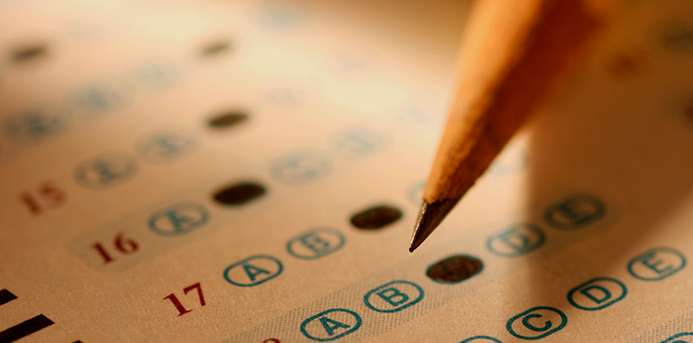Standardized tests: two words that can fuel debate like no others in pedagogical discussions.
Parents, students, politicians, administrators and teachers all have their opinions about testing—a $1.7 billion industry—and there’s evidence to support both sides of every issue. What’s clear, though, is that parents need to educate themselves about standardized assessments, and make their voices heard about whether or not to support the increase in time and money spent on testing.
As Wilmette District 39 administrator Melanie Horowitz puts it: “It’s been the perfect storm” that has led to the increasing focus and allocation of resources put toward standardized tests.
Starting with former President George W. Bush’s No Child Left Behind Act, and now with the implementation of the Common Core Standards Initiative, there is more pressure on administrators and teachers to quantitatively prove student growth as part of their own performance evaluations. This year, some local districts report that students will spend an additional four hours taking standardized tests, as the Illinois State Achievement Test (ISAT) is replaced with the Partnership for Assessment of Readiness for College and Careers (PAARC) exam.
“We want to strike a good balance between assessment and the amount of time we spend on instruction,” says Horowitz, who is the administrator for curriculum and instruction at Wilmette District 39. “We want our assessments to inform instructional practices. Most parents and teachers would like the bulk of time to be spent on teaching and learning.”
Scores Matter (But Take Them With a Grain of Salt)
To be sure, not all parents dislike the tests. My own husband, a self-professed “data geek,” has driven many a teacher crazy pouring over test results and requesting “scatterplots” of my children’s performances. And many experts—including teachers—agree that data is useful. It can show which child lacks in a certain skill, who rushes through a test, and who might need additional enrichment or intervention.
However, experts caution that administrators don’t always use data responsibly. Many districts solely consider and report students’ composite scores, instead of analyzing raw numbers from various batteries on the tests. They often don’t investigate disparities between tests and in-class performance, and they discount subjective teacher input about a student’s determination, creativity and communication skills, among other attributes linked to overall academic success.
“What these tests mostly identify are strong test takers,” says Ellie Rubenstein, who, along with Dana Gillis, founded t2, a learning center in Highland Park offering support and enrichment for students K-12. “Strong test takers have confidence in their judgment, a mature vocabulary, and less anxiety about the tests than many of the other students. They don’t worry as much about getting tripped up, which results in a better ability to focus and think problems through.”
How to Help Your Child Score Higher
And while Gillis and Rubenstein aren’t proponents of the increasing focus on standardized tests, they help students access test-taking strategies and manage anxiety in order to perform well on them.
“We support students in their efforts to succeed on the tests, but we don’t believe the test scores always thoroughly or accurately reflect a student’s wide range of abilities,” Gillis says.
Often, parents and teachers find that test results are, in fact, in line with students’ in-class performance. However, if there is a notable discrepancy in performance and expectations, parents should step in and work with the teachers to uncover what might have occurred during the test so that the student is not penalized—because things like class placement and enrichment programs are often determined using test results.
And most importantly, parents need to advocate for their child’s best interests in school, thoroughly analyzing test results, understanding how a given district utilizes test results, and keeping an open dialogue with teachers and administrators about the student’s broader range of strengths and weaknesses.

